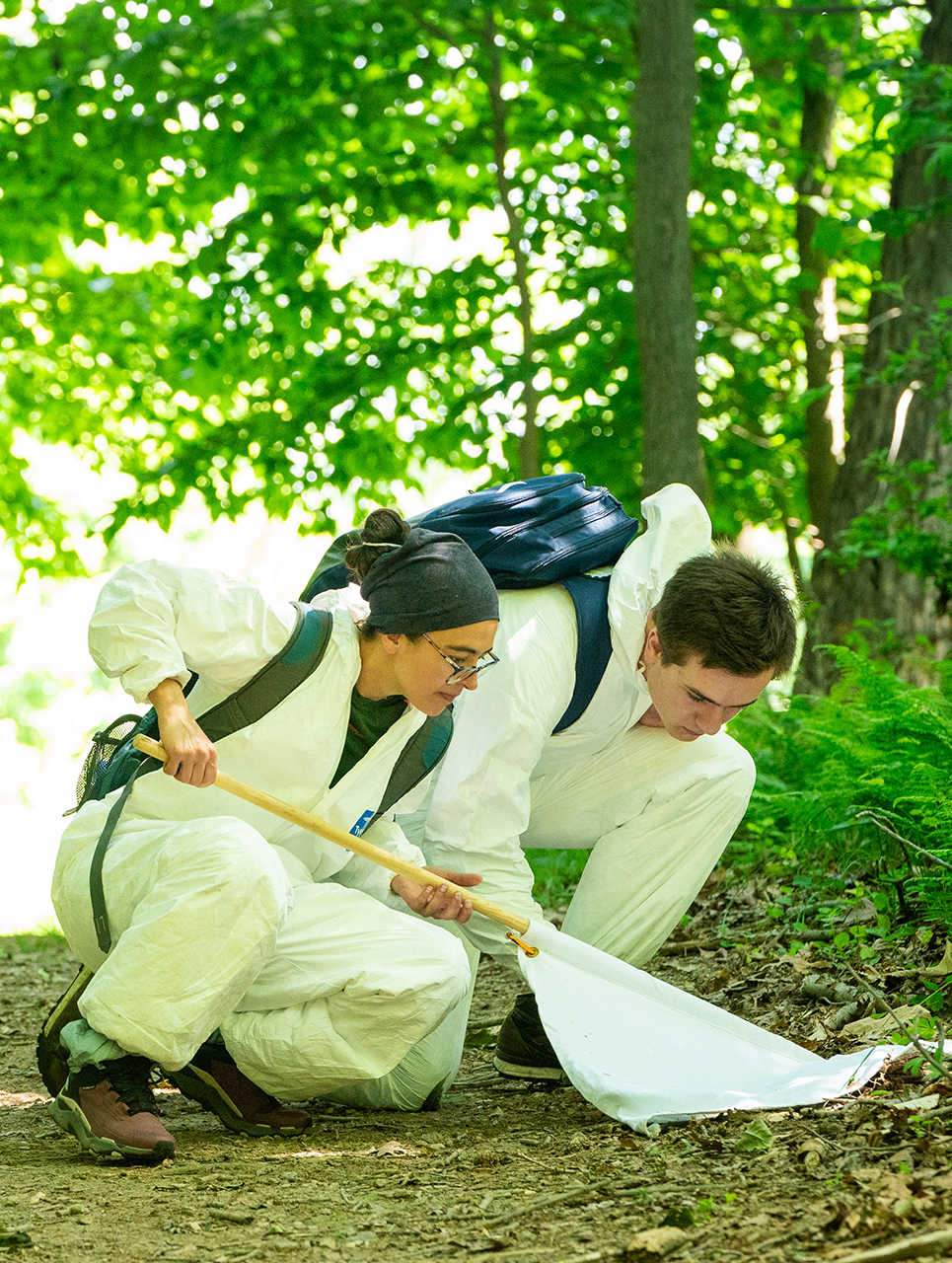Last week, I plucked a tick off the neck of a teenager I had guided on a canoe outing. (It came off easily, not having latched on yet.) Presumably the tick had climbed on as the teen had walked through some tall grass after the boats were put away. With single-minded determination, the tick had marched up, seeking the right patch of skin in which to sink its mouthparts. Everything was going great until I ruined its meal.
Over the years, I have interrupted the meals of innumerable ticks without appreciating how their life history brings them to latch onto our skin and drink our blood. But my eyes have recently been opened by a team of researchers at the University of Pennsylvania studying how ticks grow and survive, aiming to better understand the implications of how these arachnids transmit illnesses.

You might have to dig deep to find sympathy for disease vectors, but it’s hard to be a tick. To get to your food, you must wait patiently at the end of a blade of grass or a leaf and hope a host walks past. Then, you have to grab on and slice through the thick skin of your host without it noticing. For several days, you must sip blood (which, without the anticoagulants in your saliva, would otherwise clot). You must eat as much as you can, swelling many times your size — in human terms, as if you expanded to the size of an elephant. And of course, you must hang on for dear life (literally) as your host tries to pull you off.
If you’re of the black-legged ticks that spread Lyme disease, you only eat three such meals your entire life. They’re spread over a two-year life cycle that produces a confusing overlap of life stages, which Penn biologist Dustin Brisson patiently explained to me. Adult females lay their eggs in the fall or spring and die shortly after. The eggs hatch and the new larvae, about the size of a poppyseed, feed in the summer. After that first meal, the wee ticks transform into nymphs and wait out the fall and winter. Nymphs feed in the spring and transform into adults later in the year. Those adults have one more meal in the autumn or early spring before the females lay eggs (and then die), starting the cycle again.
To complicate matters further, in some places the larva, nymph and adult meal times are staggered, while in others they overlap. In any given year, you could be bitten by ticks from two, possibly three, cohorts. A tick can only pick up pathogens from a host that another tick has previously infected, so the timing of how the ticks feed could affect how we get sick. “The big question really is: if they’re overlapping, does that increase the incidence or decrease it?” asks Brisson.
Brisson’s research team is studying ticks at eight sites in the area, with two other teams of collaborators studying them at sites around St. Louis, Missouri, and eastern Virginia. Other research has found that year-to-year changes in populations of host species like wild mice, which in turn depend on food supplies such as acorns, impact tick populations. The range of sites in the current study should shed light on how different habitat and climate conditions affect the tick life cycle and the diseases they carry.
Changes in any part of the ecosystem, such as fluctuations in animal populations, or even acorn production by trees, can have impacts on pathogen transmission.”
— Raquel Gonçalves, Postdoctoral Researcher, University of Pennsylvania
Raquel Gonçalves, a postdoctoral researcher on Brisson’s team, says she finds the relationships between environment and disease fascinating. She has previously researched leishmaniasis and Chagas disease, tropical illnesses mostly transmitted around houses by biting flies and kissing bugs, respectively. “I find Lyme disease interesting because it is transmitted in the woods, and all living beings in the forest are interconnected,” she says, “so changes in any part of the ecosystem, such as fluctuations in animal populations, or even acorn production by trees, can have impacts on pathogen transmission.”
To carry out their fieldwork, Brisson and his team spend their time intentionally doing what the rest of us do by accident: pick up ticks by walking around outside.
“What we do is take a one-square-meter cloth and drag it behind us,” Brisson says. They cover a total of 1,000 meters with the cloth, stopping every 15 meters to check it. “Ticks are dumb, but not that dumb. We need to get them before they fall off,” he adds. Any ticks on the cloth go into a vial for analysis back at the lab.

When Brisson described the sampling method to me, I figured the researchers would douse themselves with tick repellent to stay safe. But he explained that the chemicals would mess with their collection method, which depends on attracting ticks, not repelling them. Instead, they stay safe by wearing white jumpsuits with their pant legs tucked into their socks. Everyone gets checked by a buddy at the end of the day. “It is intimate the first day and then it is not,” Brisson says.
Brisson is proud to say that no one working on one of his field crews has come down with Lyme disease on the job. However, he has caught the illness twice. “I got it both times in the field because I was being stupid and not following the rules,” he says.
That tick I picked off the teenager’s neck didn’t get a chance to bite, but I’ve had to work others out of my own skin. Thankfully none of them transmitted anything nasty while they were embedded. For now, it’s impossible to say why they didn’t and why two of the ticks that bit Brisson did, but the work of these scientists slogging back and forth through the underbrush might help answer that question in the future.










I contracted Lyme Disease in the furthest NW corner of the contiguous United States, specifically, in between Lake Crescent and the Straights of Juan De Fuca on the Olympic Peninsula in Washington state. Please contact me? I would like to discuss this with you because of your field of research. Thank you.